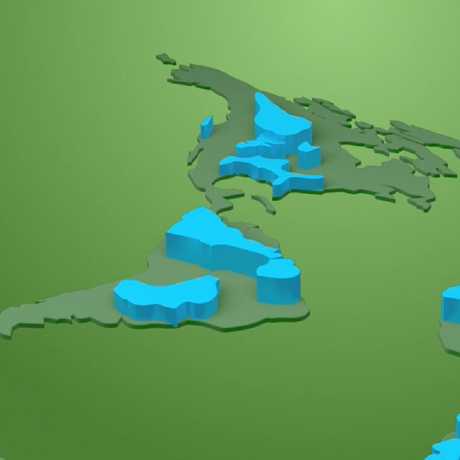Teacher note: If you preceded this activity with the Exploring Our Growing Need for Water activity, you can skip steps 1 and 3 below.
1. Hand out to students or write on the board a list of questions for them to think about while they watch the Flipside Science: How Do We Meet the Growing Need for Water video (see below).
2. Show students the video.
3. Ask students to jot down some of their thoughts about the questions that they were asked to consider while watching the video. Give them about 10 minutes to do this. You might want to play the video another time through for students. Briefly discuss these questions as a class after students have had a change to reflect individually.
- What kinds of water issues were raised in the video?
- Where can we find freshwater on Earth? What are freshwater reservoirs? Where else is water stored?
- Why is a growing population a concern for our water resources?
- Who/what uses water? Who/what is the largest user of water?
- In what ways is water wasted?
4. Ask students to choose one of the water issues introduced in the video to focus on (groundwater overuse, water waste, high water demand of agriculture, and access to clean freshwater sources) and to find a partner who chose the same issue. Note: To expedite this process or if you would like to ensure that all water issues are represented, you can also have students pick water issues out of a hat and pair up that way too.
5. Hand out one Student Worksheet to each student. Instruct students to work with their partners to figure out a way to express the water issue they chose in the form of a question, and to write their question on their worksheet. Give students about 5-10 minutes to work on this, helping to facilitate the process where needed. Here are some examples of questions students might consider:
- How can we keep underground aquifers from drying up?
- How could we decrease the amount of water wasted in our homes or on farms?
- How can we grow more food with less water?
- How can we provide easier access to clean, fresh water for people who don’t have it?
6. Hand out one stopwatch or timer to each pair, and briefly show students how to use them if needed. At this point, students will guide themselves through the next few steps of the activity, which include working through the process of facilitating their own rapid brainstorming sessions with their partners and comparing their ideas. Give students about 20 minutes for this part of the activity, reminding them when they have 10 minutes and 5 minutes left.


